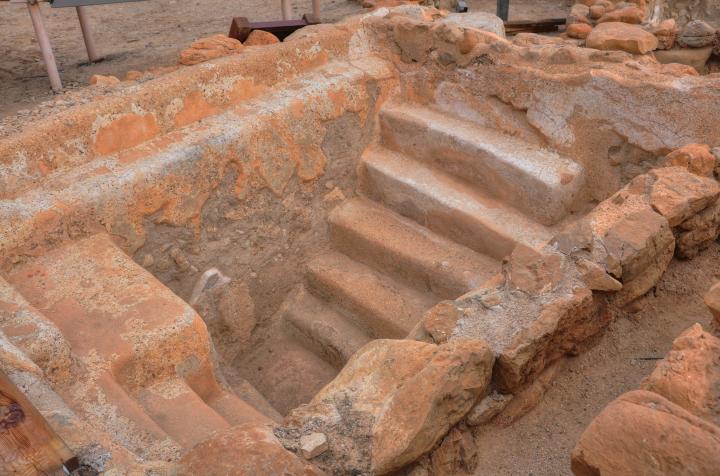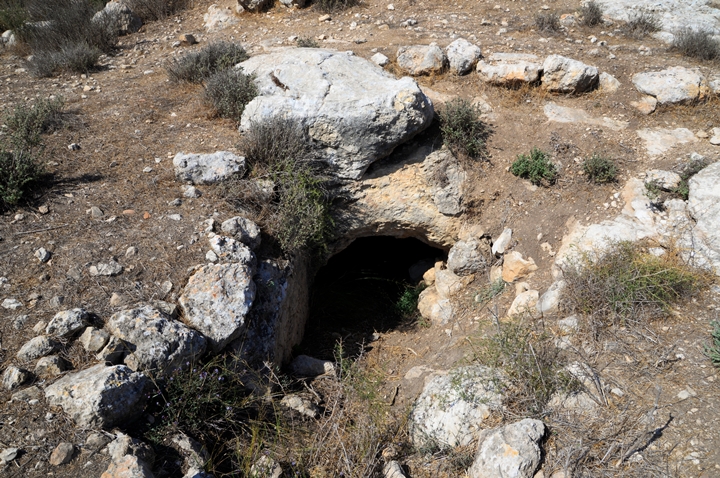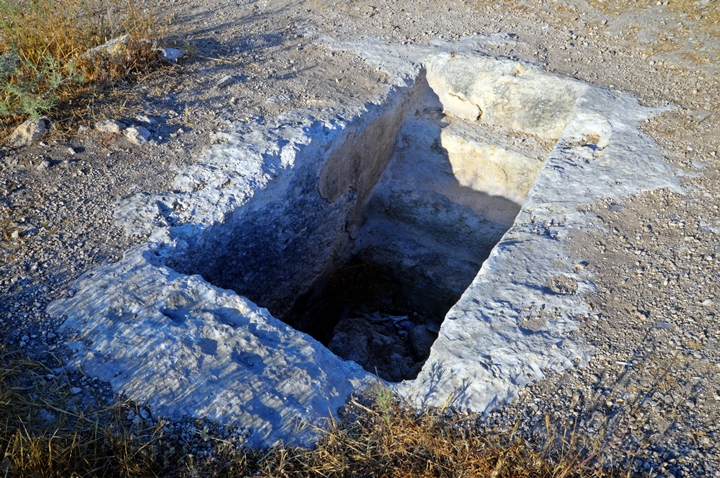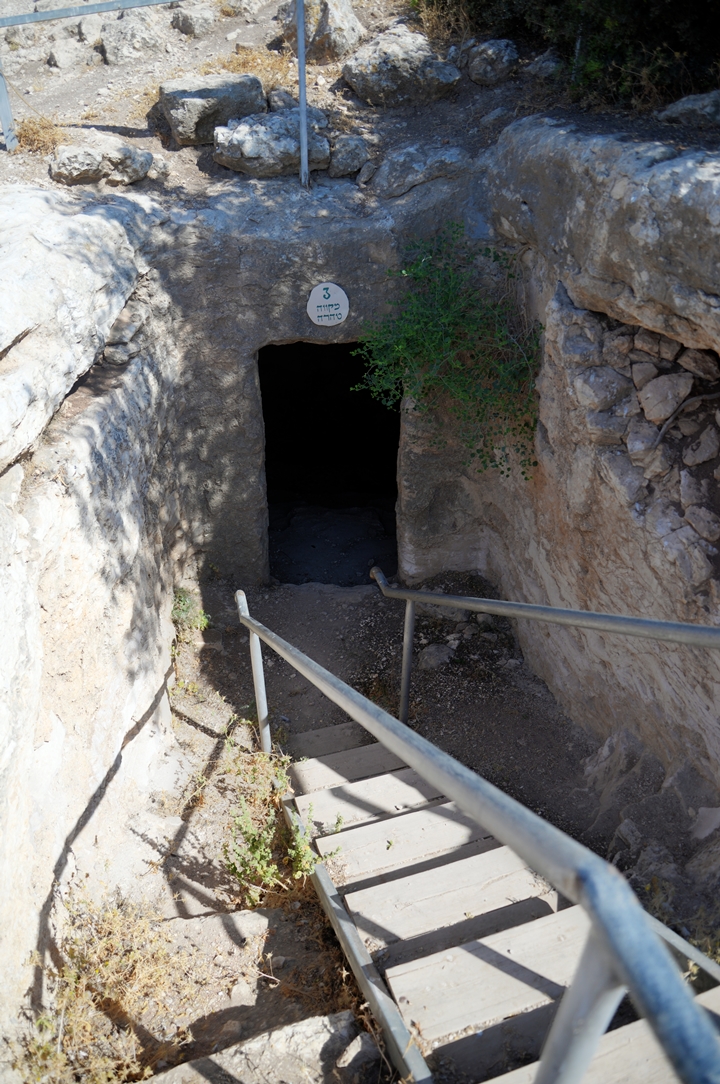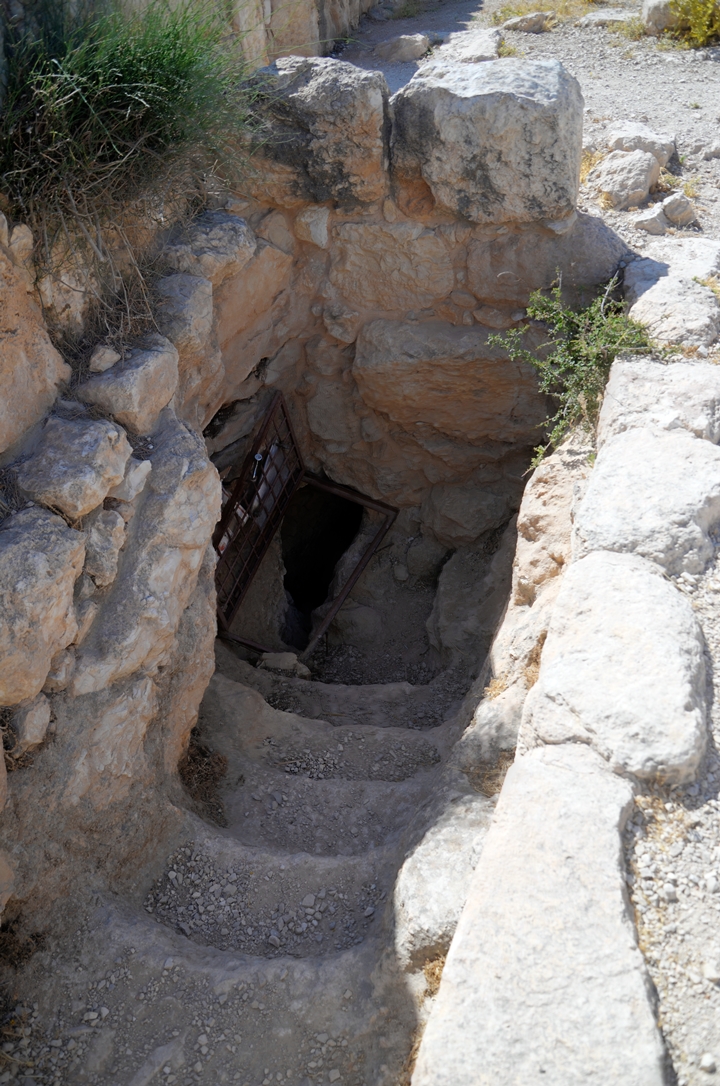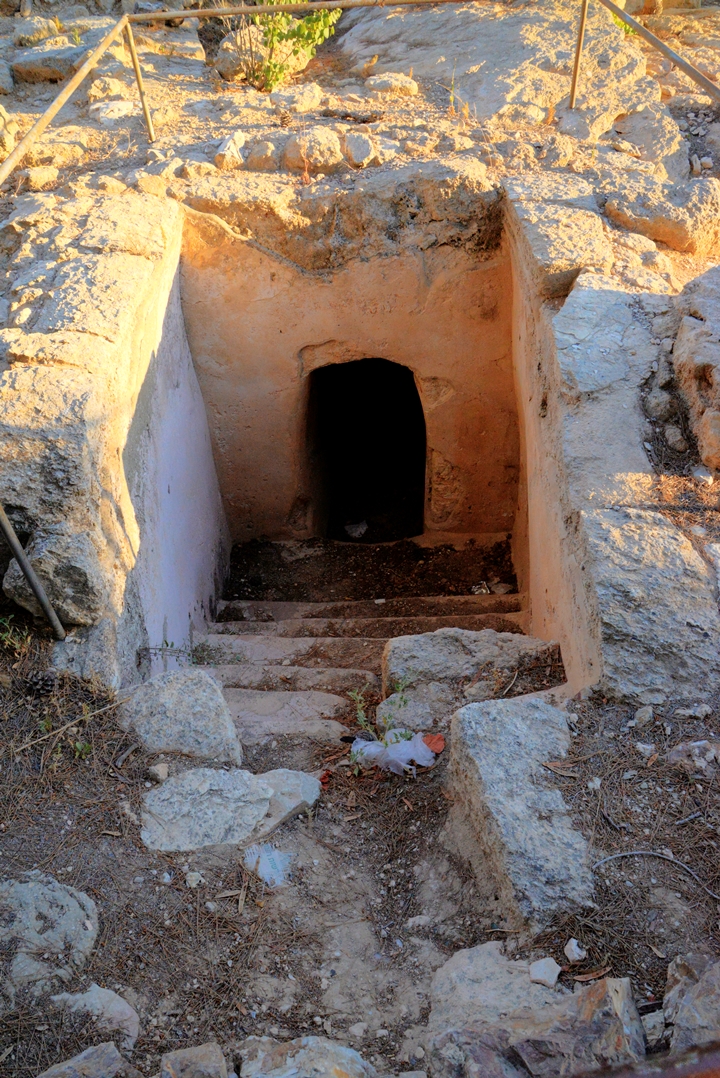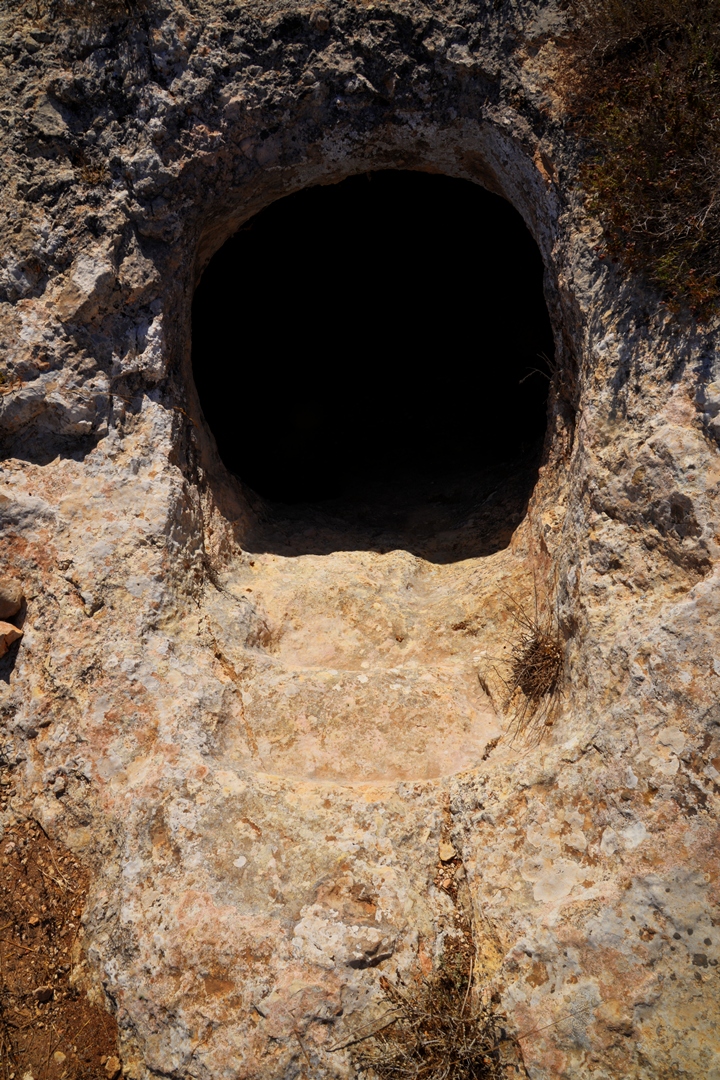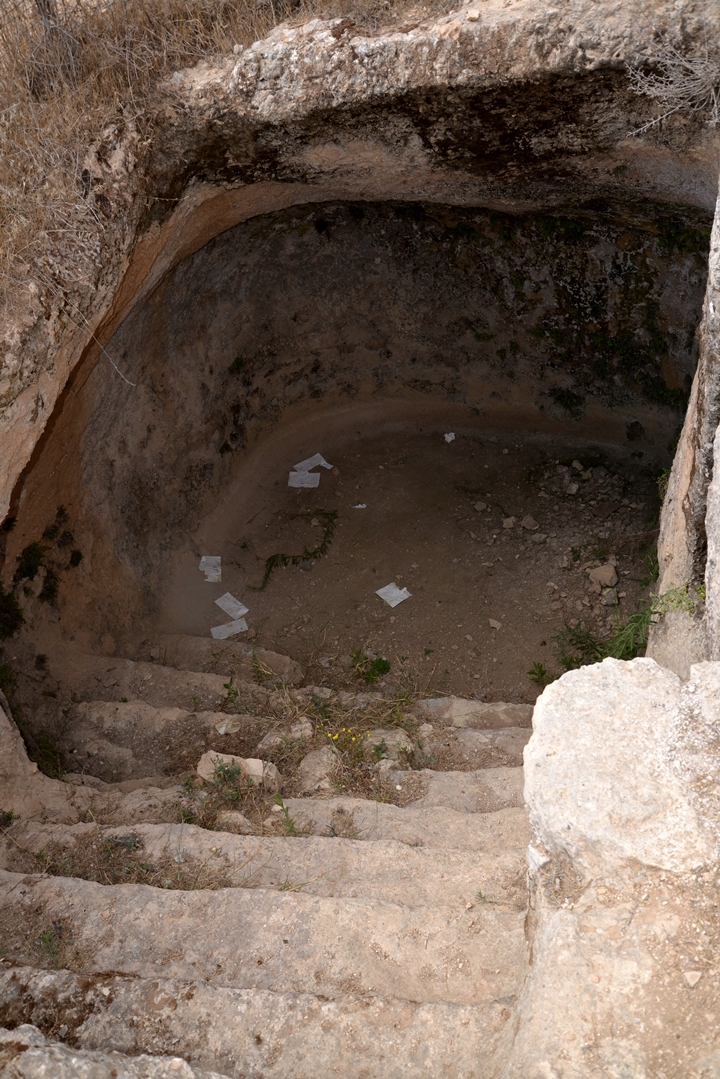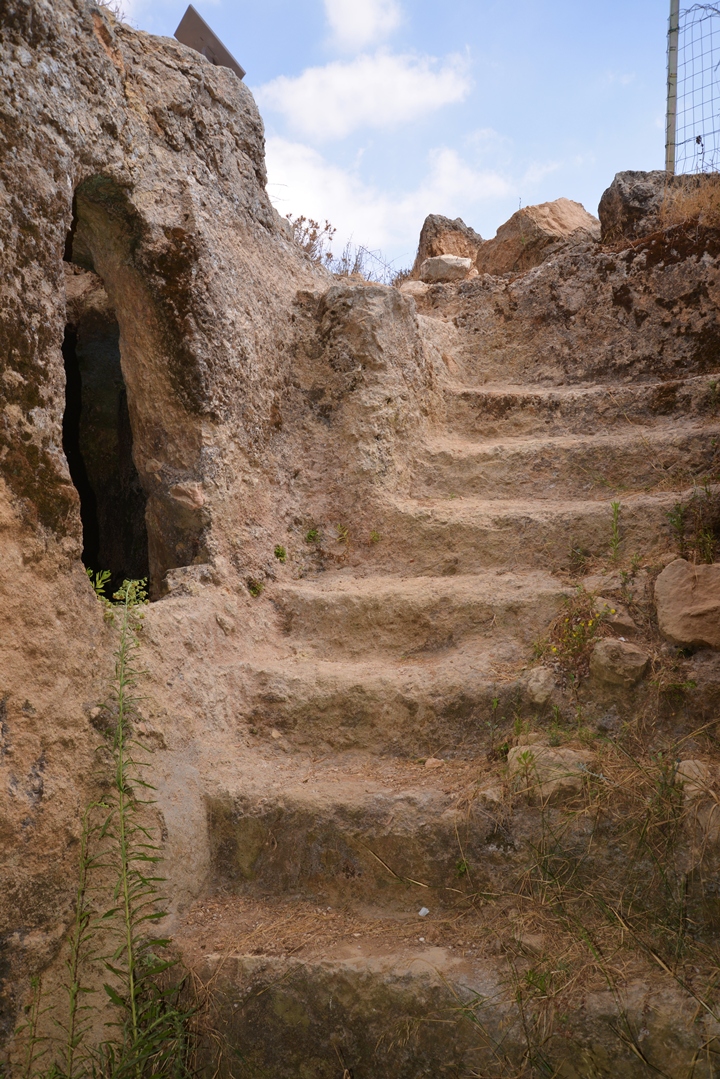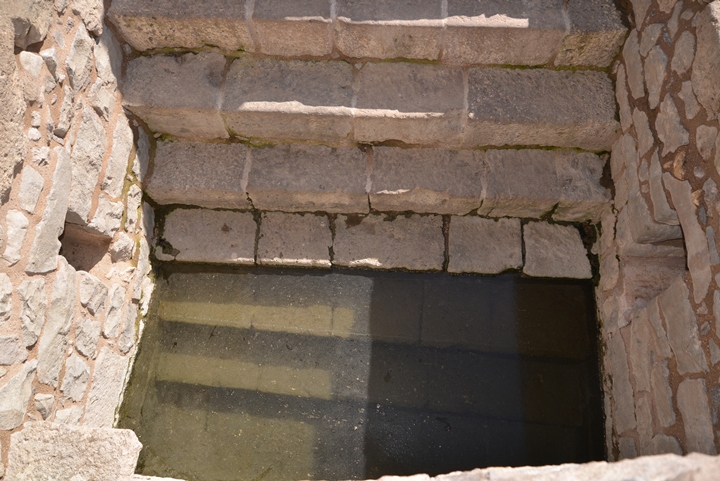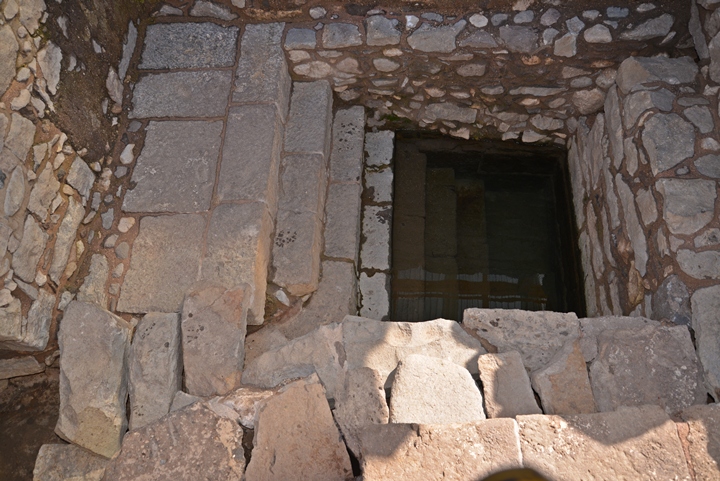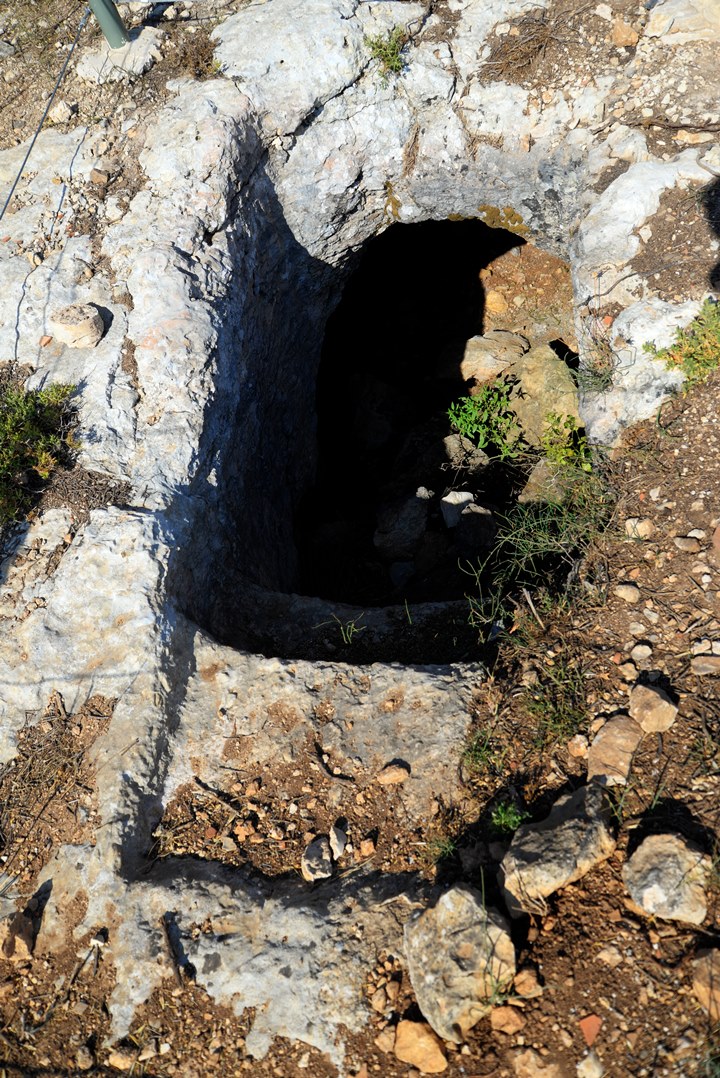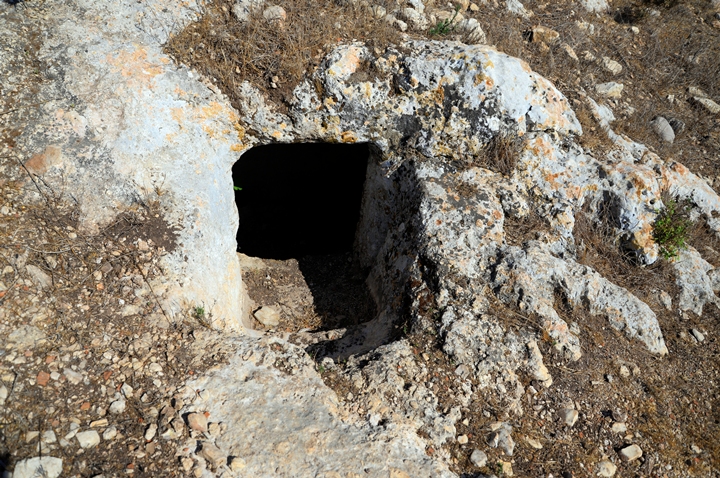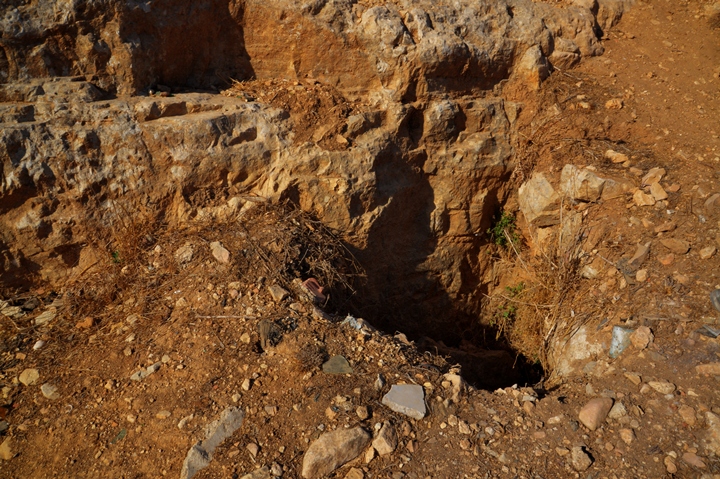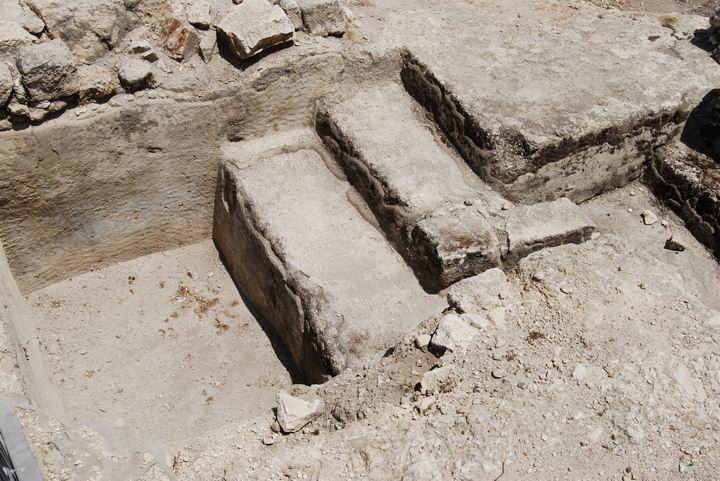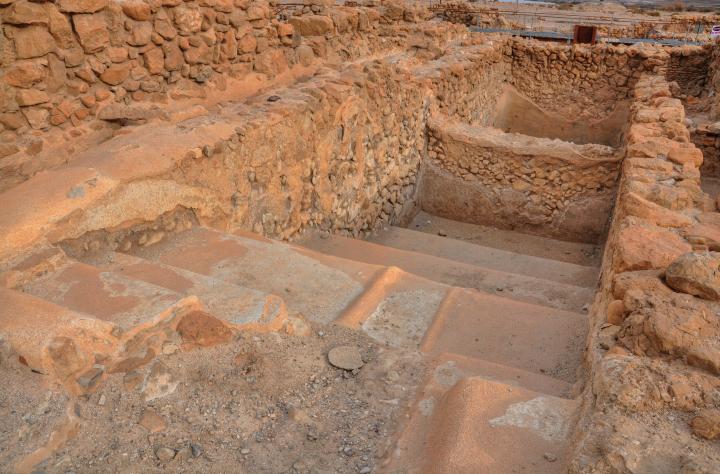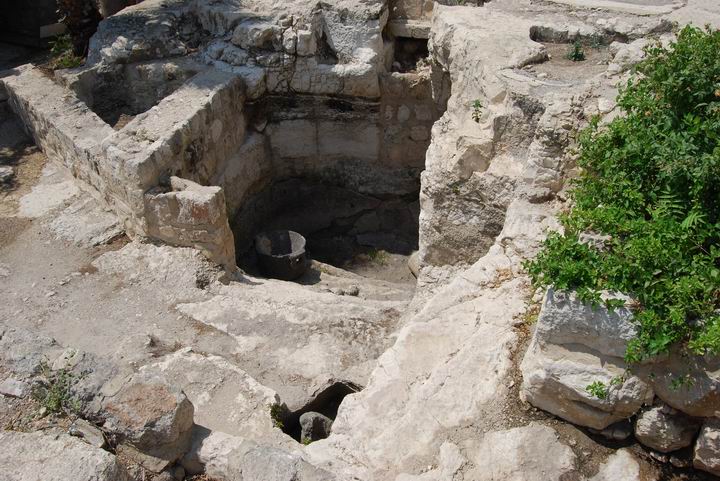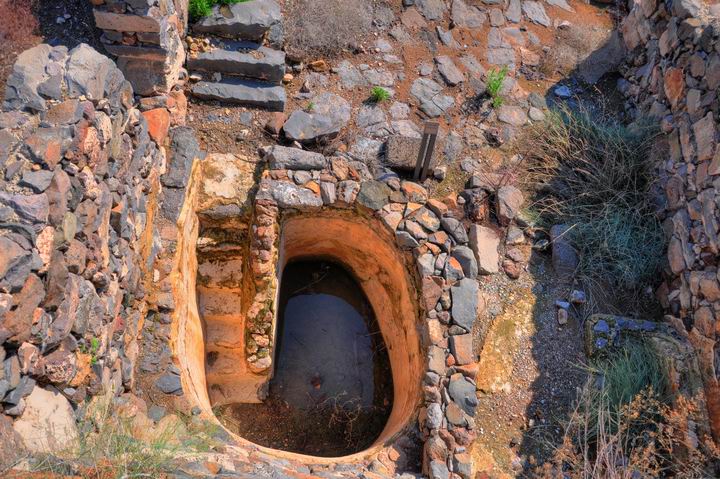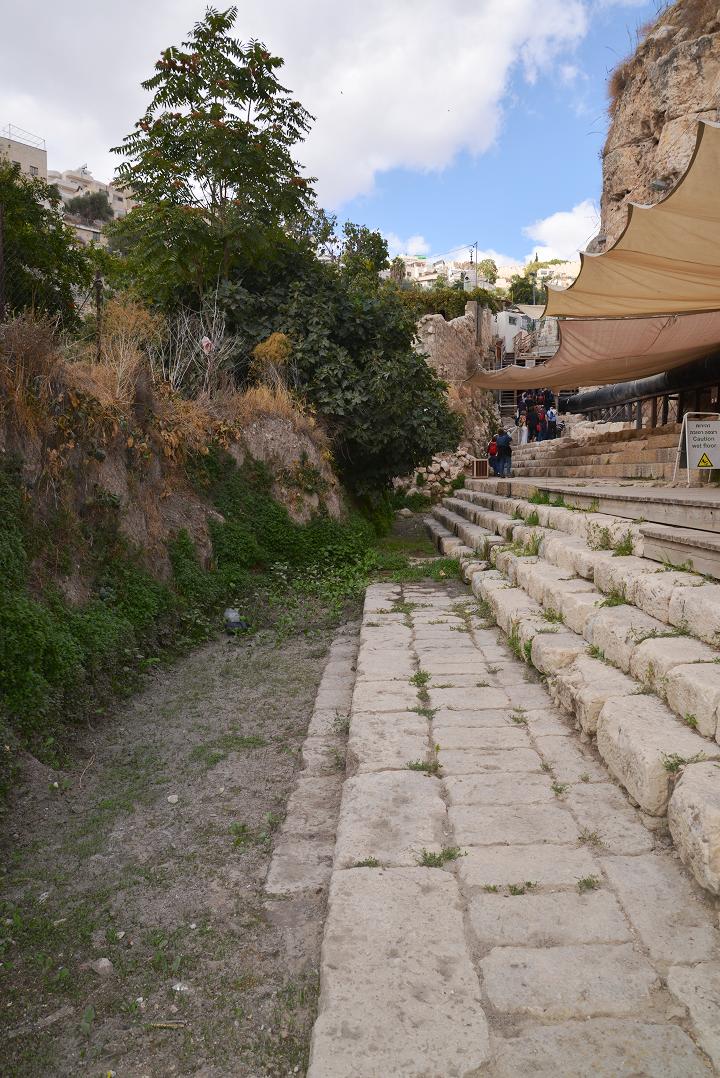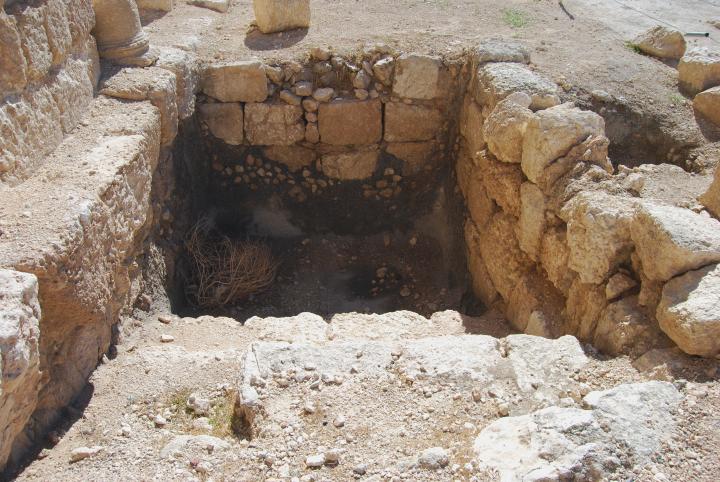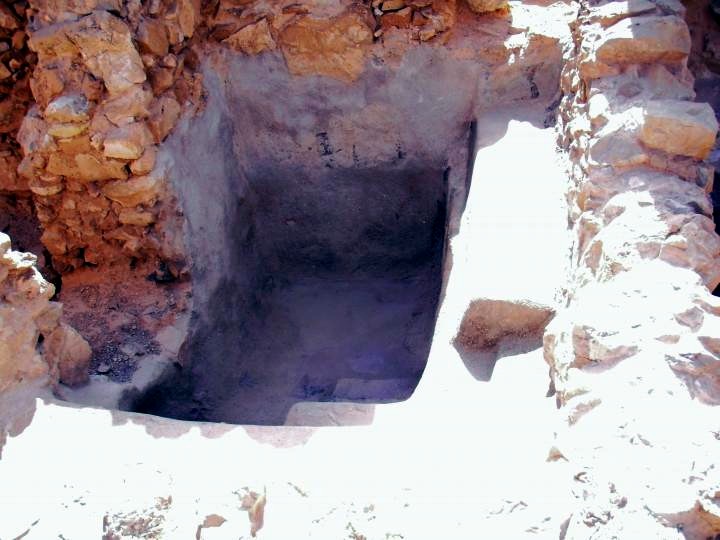An overview of miqveh installations found throughout Biblical sites.
Contents:
* About
* History
* Use and Construction
* Mishna rules
* Miqveh and Baptismal
* Biblewalks sites of mikveh installations
* Etymology
* Biblical
* Links
About:
Miqveh (plural: miqva’ot) installations, also known as ritual baths, are significant archaeological and cultural features in Israel, reflecting ancient Jewish practices of ritual purity. These installations have been found throughout Israel, dating from the Second Temple period (516 BC – 70 AD) and continuing through the Byzantine period.
Key Characteristics of Miqva’ot:
Design: Typically, a miqveh consists of a stepped pool designed to collect and hold water. The steps allow individuals to immerse themselves fully, which is a requirement for ritual purification.
Water Source: According to Jewish law, a miqveh must be filled with “living water” (mayim hayyim), which is water that comes from a natural source such as rainwater, a spring, or a river. This distinguishes it from ordinary baths.
Construction: Miqva’ot were often constructed using plaster to ensure they were watertight. The walls and floor were carefully sealed to prevent leakage, which could compromise the ritual purity of the water.
Importance of Miqva’ot
Miqva’ot are vital for understanding the daily religious life of ancient Jewish communities. They illustrate the importance of purity laws in Judaism and provide a tangible connection to the rituals described in ancient texts. The presence of miqva’ot in a variety of settings—urban, rural, and even in fortresses—highlights their significance across different aspects of Jewish life.
Preservation and Study
Many miqva’ot have been meticulously excavated and preserved, offering valuable insights into ancient construction techniques and religious practices. Ongoing archaeological research continues to uncover new miqva’ot, expanding our understanding of their distribution and significance in ancient Israel.
History of Miqveh
The construction of miqveh installations is closely tied to the development of Jewish ritual purity laws. The earliest known miqva’ot date back to the Second Temple period, specifically from the late 2nd century BCE. This period saw the formalization and codification of many Jewish religious practices, including those related to ritual purity.
Historical Timeline of Miqveh Construction:
Pre-Second Temple Period (Before 516 BC):
- While there are no concrete archaeological findings of miqva’ot from the First Temple period (1000-586 BCE), some scholars suggest that ritual purification practices likely existed in some form, though not necessarily in the structured format of the miqveh as later defined.
Early Second Temple Period (516 BC – 200 BC):
- During the early part of the Second Temple period, there is limited evidence of miqva’ot. The concept of ritual immersion was present, but specific installations have not been definitively identified from this time.
Late Second Temple Period (200 BC – 70 AD):
- The first miqveh installations that have been archaeologically verified date to the late 2nd century BC. This period aligns with the Hasmonean dynasty’s rule in Judea, which saw an emphasis on ritual purity.
- Notable discoveries from this period include miqva’ot in Jerusalem and other Jewish settlements, indicating widespread use.
- During Herod the Great’s reign, the construction of miqva’ot became more prevalent and sophisticated. Miqva’ot from this time have been found in various locations, including Herod’s palaces and public buildings, demonstrating their importance in daily life and religious practices.
- The Qumran community, associated with the Essenes, also constructed multiple miqva’ot, highlighting their rigorous observance of purity laws.
Roman Period (63 BC – 324 AD) and Byzantine period (324 – 638 AD)
During the Roman and Byzantine periods, miqveh installations continued to be an integral part of Jewish life in the Land of Israel and beyond. These periods saw significant development in the design, distribution, and cultural importance of miqva’ot.
Later periods
After the Byzantine period, the use and construction of miqveh installations continued to evolve, adapting to the changing political, social, and religious landscapes. Jewish communities across the medieval Islamic and European worlds maintained the tradition of miqveh, reflecting both continuity and adaptation in their ritual practices.
Use and Construction Techniques
Miqveh and Baptismal installations
The connection between miqveh (Jewish ritual baths) and Christian baptismal installations is deeply rooted in their shared cultural and religious origins. Here are the main points that highlight their relationship:
Shared Origins and Historical Context:
Jewish Ritual Purity Practices:
- The miqveh is a central component of Jewish ritual purity laws, requiring immersion in “living water” to achieve ritual purity. These practices date back to the Second Temple period (516 BCE – 70 CE) and were well-established by the time of early Christianity.
Early Christianity:
- Early Christianity emerged from a Jewish context in the first century CE. Jesus and his early followers were Jewish and observed Jewish laws and customs, including ritual purification.
Similarities in Practice:
Immersion in Water:
- Both miqveh and baptism involve immersion in water. The act of immersion symbolizes purification and spiritual cleansing. In Judaism, immersion in a miqveh is used for various purposes, including conversion, purification after ritual impurity, and preparation for certain religious observances.
Ritual Significance:
- For Jews, the miqveh represents spiritual purification and a return to a state of ritual purity. In Christianity, baptism symbolizes the washing away of sin, spiritual rebirth, and initiation into the Christian community.

Ritual immersion – AI generated by Stable Diffusion
Influence and Adaptation:
John the Baptist:
- John the Baptist, a key figure in Christianity, is often seen as a link between Jewish and Christian practices. He baptized people in the Jordan River, emphasizing repentance and the coming Kingdom of God. His practice of baptism was influenced by Jewish purification rituals, including the use of natural water sources for immersion.
- Check our page on Aenon near Salim where John was baptizing people
Early Christian Baptism:
- Early Christians adapted the Jewish practice of ritual immersion for their own purposes. Baptism in the name of Jesus Christ became a central sacrament, signifying the believer’s identification with the death, burial, and resurrection of Jesus.
Architectural and Structural Parallels:
Design:
- Early Christian baptismal installations, such as baptisteries, often resembled miqva’ot in their basic design. Both typically featured a pool or basin for full-body immersion. Some early baptismal fonts were even constructed with steps leading down into the water, similar to those found in miqva’ot.
Location:
- Both miqva’ot and early baptismal installations were often located near places of worship. Miqva’ot were commonly found near synagogues or within Jewish communities, while early baptisteries were situated close to or within churches.
Theological Evolution:
Symbolism and Theology:
- While the physical act of immersion is shared, the theological meanings diverged over time. Jewish immersion in a miqveh focuses on ritual purity and adherence to religious law, while Christian baptism became associated with the concepts of salvation, forgiveness of sins, and incorporation into the Body of Christ.
Ritual Context:
- In Judaism, miqveh immersion is performed on various occasions and can be repeated as needed. In contrast, Christian baptism is generally a one-time initiation rite, symbolizing a permanent transformation and new identity in Christ.
Conclusion:
The miqveh and Christian baptismal installations are connected through their shared roots in Jewish ritual purification practices. Early Christianity adopted and adapted the practice of immersion, giving it new theological significance. Despite differences in ritual context and symbolism, the fundamental act of water immersion remains a common thread, reflecting a continuity of religious practice from Judaism to Christianity.
Miqveh Installations in Biblewalks sites:
There are hundreds of ancient miqveh installations in the ancient sites of Israel. Here is a sample of these installations.
Ruins of a second temple period village (Biblical Rabbah?), in the Judean foothills region south of the valley of Elah.
In one of the caves a ritual bath (miqveh) was identified: A rectangular corridor descends towards an opening with an arched lintel, then opens to a trapezoid chamber covered with gray plaster.
Khirbet el-‘Alya is a multi-period site, towering over the west side of Ramat Beit-Shemesh Aleph.
On the summit are remains of ancient installations, including this stepped ritual bath.
According to Jewish tradition, the vine-dressers (workers responsible for producing the wine), and the workers of the olive oil, had to purify themselves in a ritual bath for producing Kosher wine or oil. Such ritual bath (Hebrew: Miqveh) was cut into the rock. These stepped pools had common features: cut into the bedrock, steps leading down to the bottom, deep enough allowing full immersion, and water supplied through channels from a spring or filled by rainwater.
Ruins of an Early-Roman Jewish rural village in the Judean foothills region, south of the valley of Elah. The remains include residential houses, cisterns, several ritual baths (Miqveh), ancient synagogue, wine presses and other farming installations.
A ritual bath (Miqveh) is located nearby, on the northern edge of the village. It is one of the four immersion baths which were carved into the rock across the plazas and courtyards.
A rock cut stepped and white plastered installation of a ritual bath (Mikveh) is located on the east side of the large public building. It was constructed before the construction of the building, during the Hasmonean period. Later, during the Bar Kokhba revolt, it was used as an entrance to a public hiding complex.
A fortified Tel, situated near an ancient strategic road in the Northern Samaria region.
On the east side of the hill, under the tree, is an entrance to an underground complex, which includes a ritual bath – miqveh. An internal view of the stepped entrance:
Ruins of a royal palace and administration center, on the south outskirts of Jerusalem, overlooking the road to Bethlehem and Hebron.
Adjacent to the columbarium, a burial cave and ritual baths (miqvehs) were cut into the rock. They are dated to the second temple period. The burial cave was reused in the late Roman period.
Ruins of a fortified village situated near the Lebonah ascent. Identified as Kfar Lakitia – one of the Roman garrisons at the end of the Bar- Kokhba revolt.
A miqveh is located about 450m south east of khirbet el-Qutt. Several steps lead down into the cave of this ritual bath.
Ruins of a Biblical city in the community of Psagot. This may have been the site of Joshua’s Ai.
On the south western foothills is a miqveh – a large Jewish baptismal place. This ritual bathing pool is common in Judea, from the Hasmonean period (2nd century BC) up to the Bar Kokhba revolt (2nd century AD).
The area on the bottom of the immersion pool, cut into the bedrock, is 2.8m x 3m.
A number of steps lead down into the water filled pool, where the person would immerse himself as part of a ritual ceremony. The wide staircase allowed descending and ascending on different sides, so the purified person will not follow the unclean path.
A 5.5m x 3.5m cistern was located on its north eastern side, with a door cut through the wall between the cistern and the Miqveh. When the archaeologists first inspected this installation, the entrance from the cistern to the miqveh was sealed with plaster and covered by soil. They dated the fill to the Byzantine period, when the site was reoccupied and the new settlers covered it up and sealed the door from the cistern.
Ruins of an Early Roman fishing village, near the Arbel cliffs, on the shores of Sea of Galilee. Known as the home of Mary Magdalene.
In excavation area G are three interconnected ritual baths (Hebrew: miqva’ot – plural of miqveh). These installations enabled the religious Jewish residents of the town to maintain ritual purity. Their unique feature is that they used groundwater to fill the pools rather than spring or rain water.
Miqveh #1 is in the south east side of the alley. It is accessed from a paved area within a house, then 7 wide steps lead down into the bottom of the pool. The are of the pool is 2.15 x 2.3m and it is 2.0m deep. The maximum volume of water is 4.9m3. The ground water enters through 20cm by 30cm openings on both side walls.
Miqveh #3, also with seven steps:
An archaeological ruin is located on the south side of the community of Itamar – Khirbet Heiyeh (also locally known as: Tel Chahim). This was a farming village that reached a peak during the early and late Roman period (1st-3rd century AD).
A ritual bath (miqveh) is located on the west side of the site.
Yodfat is the famous site of the Roman siege on Josephus Flavius and his Galileen army in 67AD.
Along the western trail is a ritual bath (Miqveh), an important element in Jewish tradition. Steps lead down to a reservoir which was filled by rain water, or filled from the larger nearby cistern.
An interesting structure that was found here is a large public ritual baptismal (mikveh). It serviced the travelers that passed here along the ancient route, and also was used by the visitors to the Necropolis to purify themselves after the visit.
The mikveh has two 1m wide openings, and a 5.5m x 6.5m underground pool with an estimated height of 4m. The walls and floor are covered by two layers of plaster, which were dated to the end of the Hellenistic period.
The double entrance design is common in Jewish ritual baths, as one was used for entry while the other for exit, in order to separate the impure entry from the purified exit.
The southern wall excavations unearthed dozens of ritual baths (Mikveh; baptismal). They are located close to the walls and the purpose of these baths were to purify the visitors to the Temple. Looking at the quantity of these baths , these served thousands of worshipers who came to the temple.
The ritual baths were constructed according to the Jewish religious laws: the structure was built in the rock and not above it, to be in direct contact with the ground. The water should flow, undrawn, into the pool. The amount of water must be at least 1 cubic meter, 1.2M high, and the walls must be plastered.
Another example of a rock-cut Mikveh is seen below, and is from the second temple period (1C BC to 1 C AD). There are two sets of separated stairs: one side was for the way down to be purified, while the other side for the cleaned bathers – on their way to the temple (through the “Robinson” arch which is seen in the background).
There are dozens of such ritual baths around the south-west and south sides.
The Essenes were ascetics – a lifestyle characterized by abstinence from various sorts of worldly pleasures. They paid great attention to purity and ritual bathing. The ritual baths were constructed according to the Jewish religious laws: the structure was built in the rock and not above it, to be in direct contact with the ground. The water should flow, undrawn, into the pool. The amount of water must be at least 1 cubic meter, 1.2M high, and the walls must be plastered. There are two sets of separated stairs: one side was for the way down to be purified, while the other side for the cleaned bathers.
Another ritual bath is seen on the next picture. Josephus writes about the ritual bathing: “…and when they have clothed themselves in white veils, they then bathe their bodies in cold water”.
South to the monumental staircase are many ritual baths, used for purification of the visitors before entering the temple. There are dozens of such cisterns and Mikveh (baptismal) installations, similar to the south-west side.
Hasmonean and Herodian Jericho
Ruins of Hasmonean and Herodian palaces built in the second temple period, in the southwest area NT of Jericho.
There areseveral ritual baths (Mikveh), some of these are in excellent condition:
Another view of this beautiful ritual bath:
Other ritual baths, with separate steps from descending and ascending (after purifying):
Gamla, a large fortified city located on a high ridge above a crossing of two gorges, is one of the famous cities where Jewish rebels fought bravely against the Romans until their fatal end. Its story is well detailed in Josephus historical accounts.
A ritual bath in the form of a tub is located at a lower side of Area B.
Shiloah (Siloam) Pool, Jerusalem
Remains of a large public ritual pool of Shiloah, dated to the second temple period.
Herod the Great built this monumental fortress and palace in the Judean desert south of Jerusalem, and was buried here. The site was a rebel stronghold during the great revolts against the Romans. It is one of the most exciting archaeological sites in Israel.
The Zealots added a ritual Mikveh (baptismal) in the courtyard as part of the preparation for the gathering in the synagogue. Stairs lead to the bottom of a pool.
The last and most important fortress of the great Jewish rebellion against Rome, and one of the most impressive archaeological sites in Israel.
Two installations of Mikveh (baptismal) were constructed during the siege, one near the baths house (below) and the other on the south side.
Etymology:
* Miqveh:
- “Miqveh” (מִקְוֶה) is derived from the Hebrew root ק-ו-ה (k-w-h), which means “to collect” or “to gather”. This root is associated with the idea of collection or assembly.
- The basic meaning of “miqveh” is thus a gathering or collection of water. In the context of Jewish ritual practice, it specifically refers to a pool or bath designed to collect natural water for the purpose of ritual purification.
- Over time, the term “miqveh” came to be specifically associated with the ritual bath used for purification. This specialized meaning developed alongside the detailed purity laws outlined in the Mishnah and Talmud, which codified the requirements and uses of the miqveh.
Biblical:
- The term “miqveh” appears in the Hebrew Bible, where it is used to describe a collection of water. For example:
- In Genesis 1:10: “And God called the dry land Earth; and the gathering together (miqveh) of the waters called He Seas: and God saw that it was good.”
- In Exodus 7:19: “And the LORD spake unto Moses, Say unto Aaron, Take thy rod, and stretch out thine hand upon the waters of Egypt, upon their streams, upon their rivers, and upon their ponds, and upon all their pools (miqva’ot) of water, that they may become blood; and that there may be blood throughout all the land of Egypt, both in vessels of wood, and in vessels of stone.”
Links:
- Hiding Complexes info page
- Our search for Aenon near Salim where John was baptizing people
- Horvat Ashun, Modi’in – Early Roman period miqveh
BibleWalks.com – walk with us through the sites of the Holy Land
Columbarium<<<—Previous —<<< All Info >>>—Next Info—>>> Hiding complexes
This page was last updated on Mar 15, 2025 (add H. Ashun video)
Sponsored links:
